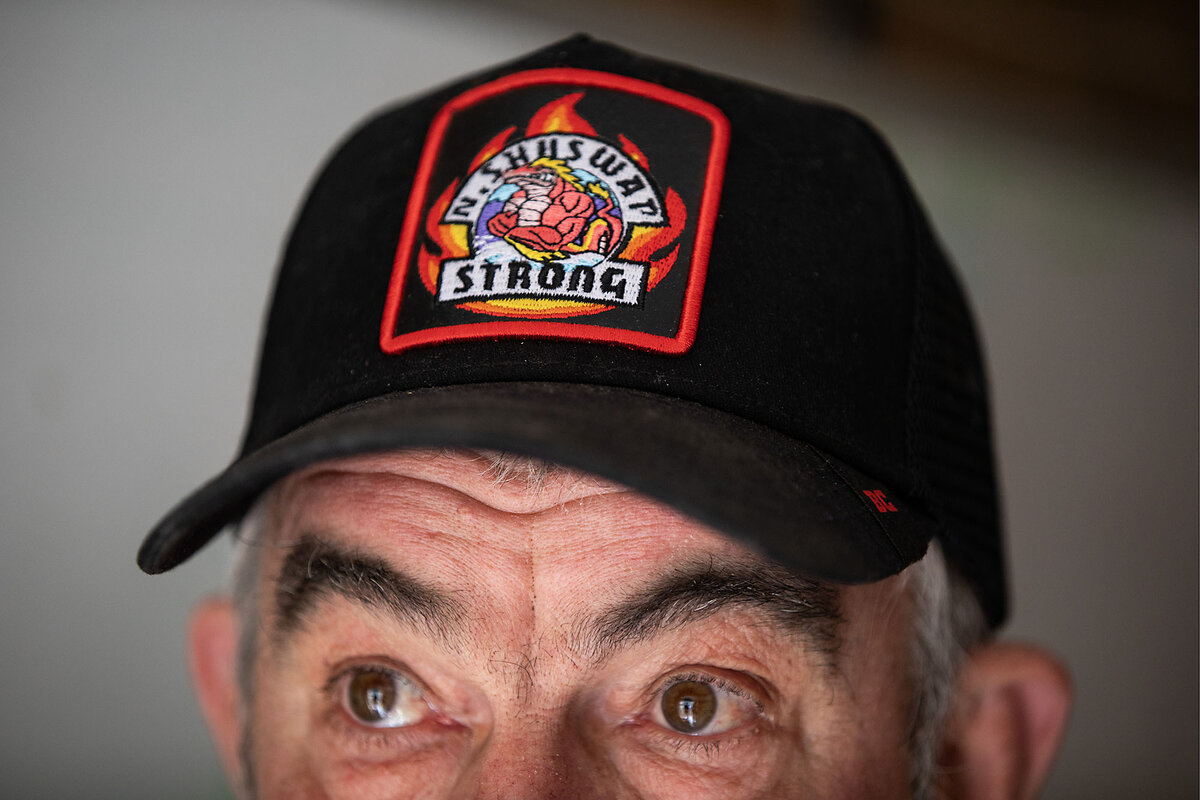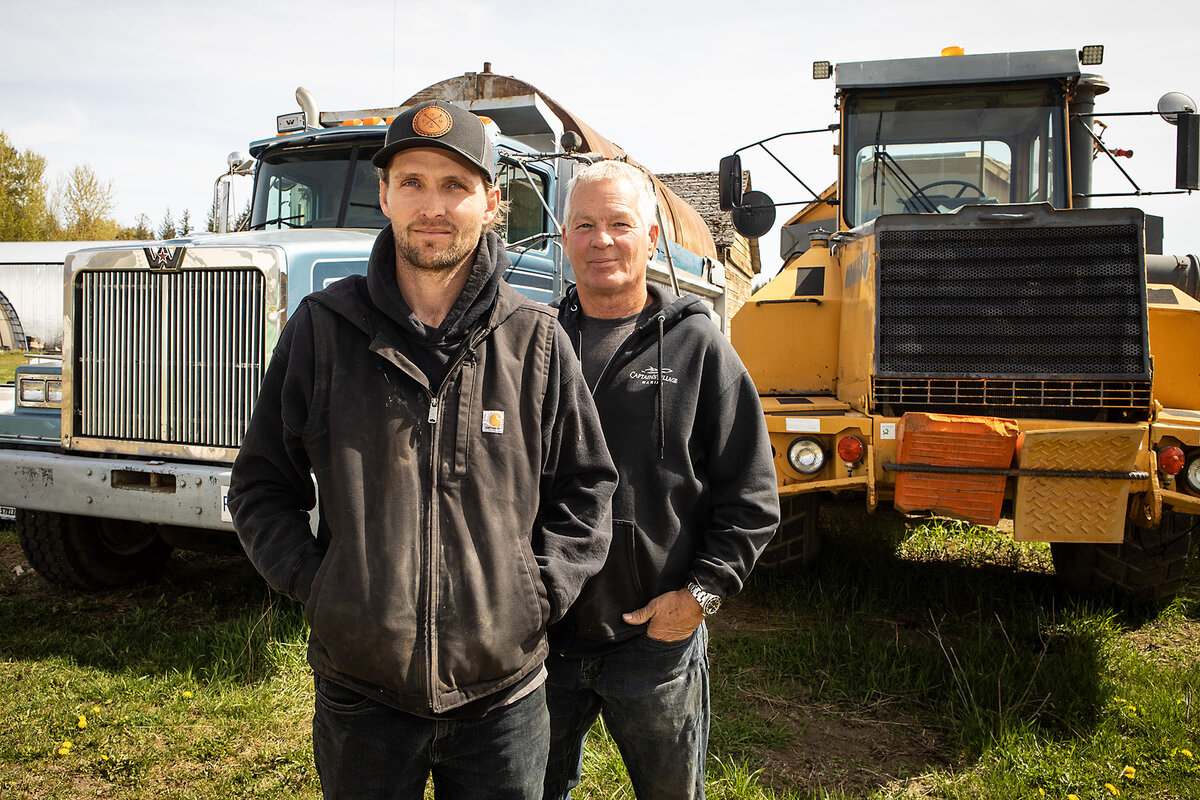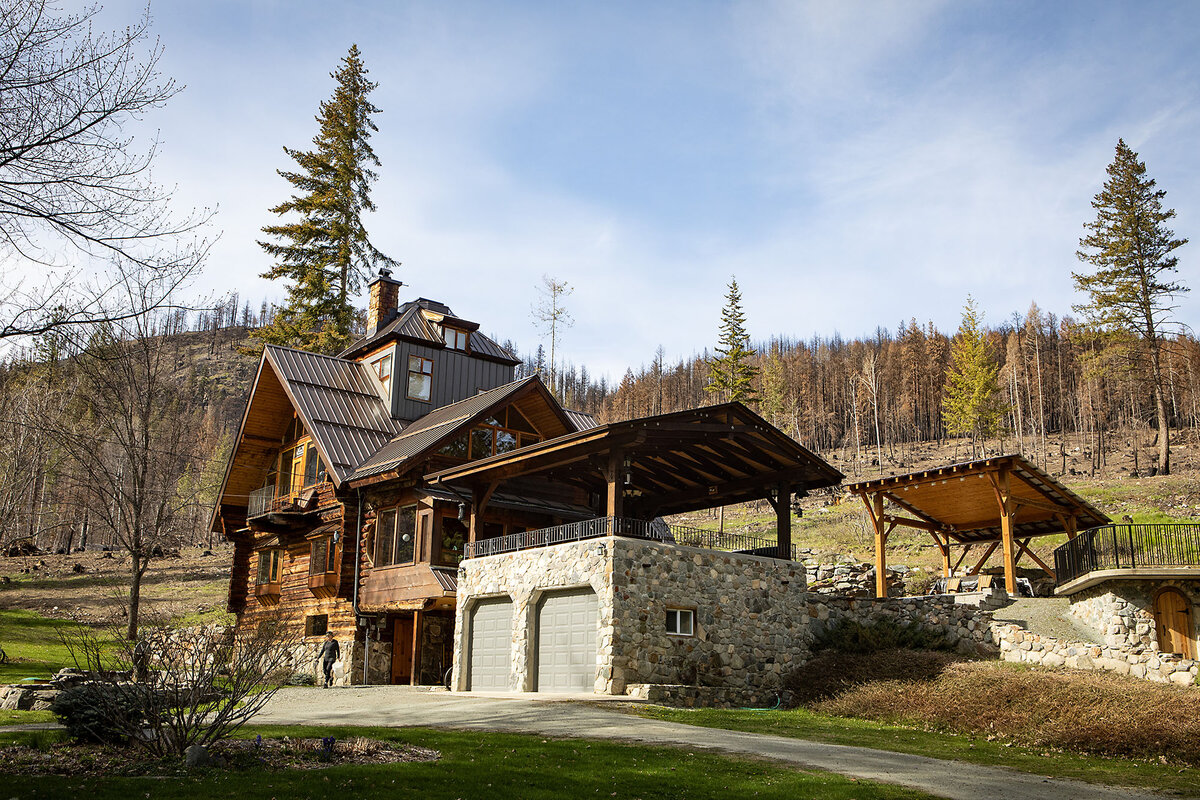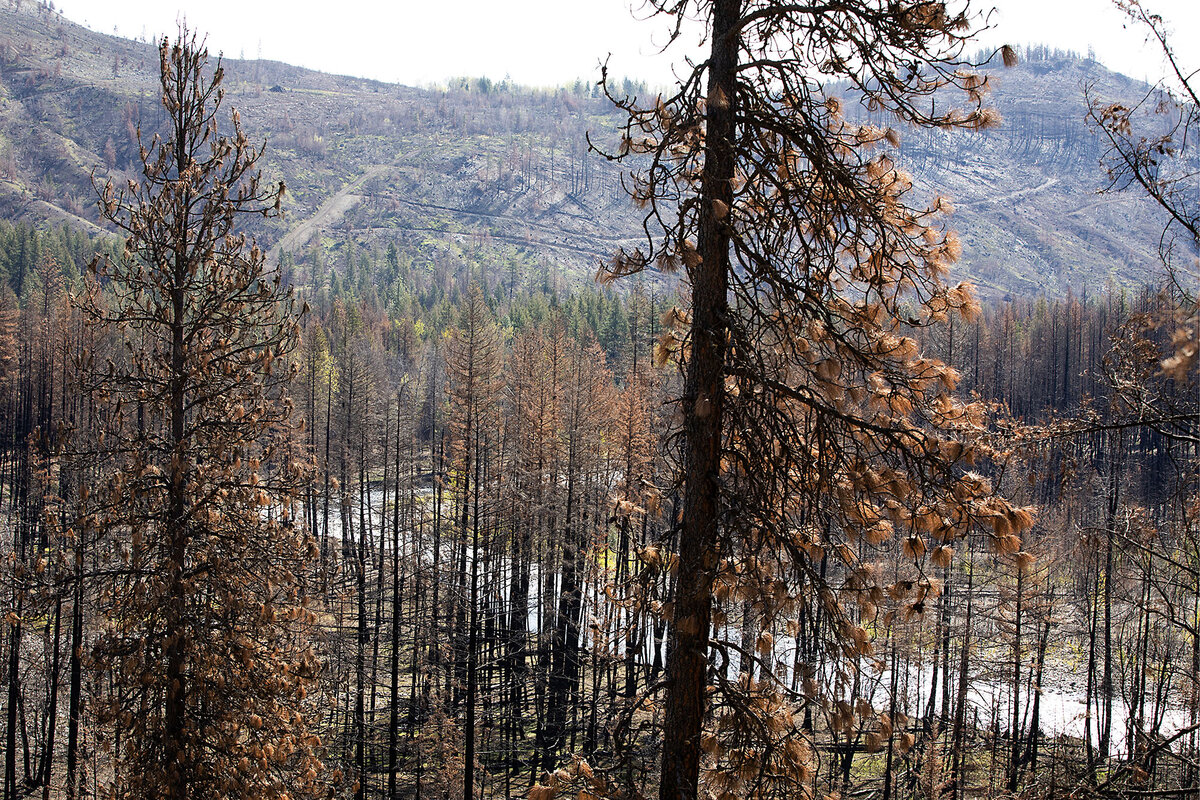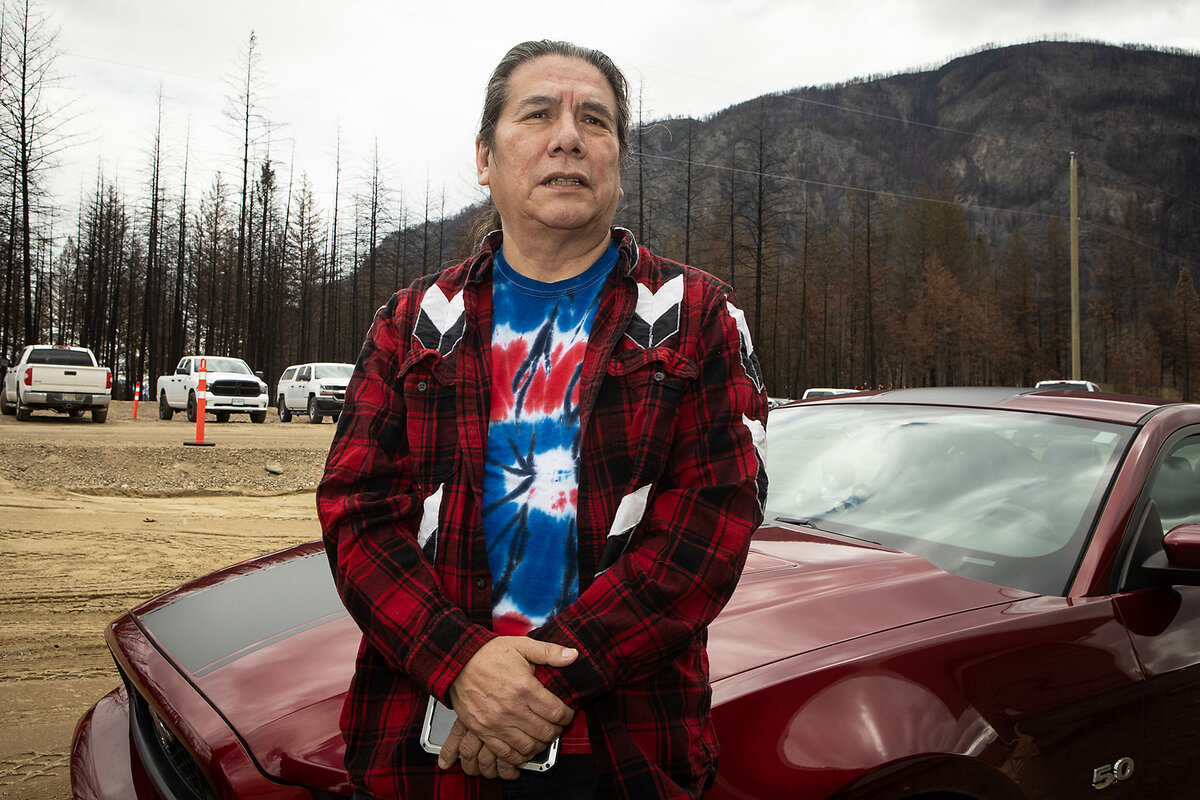As wildfire season looms, these residents aren’t waiting for government help
Loading...
| Magna Bay, British Columbia
When the Bush Creek East wildfire roared like an engine over the hillside at the edge of his property last August, Karl Bischoff organized three dozen neighbors to fight off the blaze.
They saved his house and farm. But more than 170 buildings burned. The blaze was one of thousands that engulfed an area larger than Greece and marked the worst wildfire season in Canadian history.
This year, Mr. Bischoff is taking no chances.
Why We Wrote This
A story focused onWhose responsibility is it to keep communities safe? After a record 2023 wildfire season, Canadian officials say they are better prepared to protect communities this year. Residents aren’t so sure.
The lumberjack unscrews the lock to a new trailer parked on his land. It holds water tanks, hoses, axes, and two-way radios worth $10,000 (Canadian; U.S.$7,300). He has formed a volunteer brigade that this spring earned provincial certifications to suppress fires. They call themselves the North Shuswap Community Association Volunteer Rapid Response Firefighters. They’ve chosen a theme song, too: Tom Petty’s “I Won’t Back Down.”
“We were burned badly; it’s not going to happen again,” he says.
Many Americans know about Canada’s 2023 wildfire season because smoke choked their neighborhoods. Here, along the northern shore of Shuswap Lake, ground zero for one of the summer’s worst fires, residents say they tried to play a part in containment but instead clashed with officials. As peak wildfire season looms, many say they’ve lost faith in the government’s ability to keep the community safe and are searching for ways to rebuild trust. That trust will be crucial, here and beyond, as the risk of wildfires grows around the globe.
Kira Hoffman, a fire ecologist at the University of British Columbia and former wildland firefighter, says that locals need to be empowered to meet the challenges. “I think people are really realizing that we need to do something different,” she says. “There is trauma [from last year’s season], but that trauma is going to be a cycle of trauma if we don’t start empowering people to change or be responsible for that movement forward.”
After last year’s devastation, British Columbia put together a task force that issued 31 recommendations this spring. They included more firefighter recruitment, better technology and equipment, and more support for homeowners protecting their properties from fire. One of the pillars in the final report: more local involvement “based on a foundation of communication, co-operation, and trust.”
But that foundation is a shaky one for many residents of North Shuswap. Locals say evacuation orders came too late last August, as two fires merged into a single massive one. They also complain that after firefighters left the area, police arrived to enforce an evacuation order by blocking access, which hindered residents’ effort to continue to fight the flames.
Employees from Captain’s Village Marina in Scotch Creek, on Shuswap Lake, made national headlines during the Bush Creek East fire for defying the provincial evacuation order, instead staying to fight the fire with about a dozen locals. “You’re making a highly dangerous situation even more dangerous for everyone involved,” Bowinn Ma, British Columbia’s minister of emergency management, warned at the time.
But locals are convinced the community would have faced far more damage had they left. “The No. 1 lesson we learned from this: Government is not there to look out for you,” says marina owner Dean Acton. He has invested approximately $100,000 in new firefighting gear like a dump truck, 5,000-gallon water tanks, and hoses.
“They treated us all like criminals,” adds Jim Cooperman, a local historian who has been investigating the fire on his blog and organizing community events to demand accountability and better mitigation plans moving forward.
His group’s list of grievances against the local and provincial governments is long. Its main goal is to investigate a back burn – or planned fire to contain wildfires – that had been burning for weeks in hills above the town. The group says that the planned ignition caused the destruction after it swept downhill during a windstorm. (The British Columbia Forest Practices Board is reviewing the back burn, and the province’s Ministry of Forests says it welcomes the review.)
Mr. Cooperman’s group is also pushing for reforms within the province’s Wildfire Service, including a better process for hiring locals like Mr. Bischoff. “They really have to up their ante on how they approach firefighting,” Mr. Cooperman says.
Last year’s fires destroyed twice the amount of land burned during the previous record year of 1989. At least six firefighters died. And while Mike Flannigan, who studies the intersection between fire and climate, says last year was an extreme outlier, challenges are mounting this year amid drought and a record low snowpack.
That is going to mean more communities on the front lines. “We see more and more fire in the interface between the forest and the community,” says Dr. Flannigan, a fire expert at Thompson Rivers University in Kamloops, where the government is building a first-of-its-kind fire center, among other measures recommended by the task force. Empowering the people in that interface is key to fire management efforts, Dr. Flannigan says.
One town, Fort Nelson, was evacuated during a May fire. Meteorologists say they expect a hotter than usual summer.
In June, federal and provincial forest ministers endorsed a prevention strategy that aims to have communities in high-risk zones develop wildland fire and prevention plans by 2030.
The British Columbia Ministry of Forests plans to advance work “with trained and experienced individuals,” it said in an emailed statement in May. But “this isn’t a volunteer program – people are hired on. It’s dangerous, difficult work, and it needs to be coordinated to keep everyone safe.”
Dr. Hoffman applauds more support for Indigenous cultural burning to prevent bigger fires, for example, which even five years ago went unrecognized.
The Bush Creek East fire was one of 2,245 blazes that burned through British Columbia last year. Resources are stretched and wind patterns fickle, says Paul Gamble, local fire chief who fought the blaze from First Nation land. He understands some people are angry. “Their houses burned down. It’s natural,” he says. “But not one person was hurt or killed here.”
That’s the main message at a healing ceremony in the Skwlāx te Secwepemcúl̓ecw First Nation on a recent day that welcomed the community home to rebuilt houses. Kukpi7 (Chief) James Tomma, who lost his home and almost his life, says it is wrong to blame the British Columbia Wildfire Service. “There is no magic bullet to fighting these fires. [The service is] at the mercy of what resources they get to battle these fires,” he says. “We have considerable faith in their skills and expertise.”
Jenn Breckenridge, whose house burned down in the fire, wishes she felt the same level of trust. But she lost her home when evacuation orders last summer came just hours before fire overtook the community. “They told us not to panic, everything looks fine, but we were looking at the mountain and pointing and saying, ‘It doesn’t look fine,’” she says.
And as she starts to rebuild her home, she welcomes efforts like that of Mr. Cooperman to demand reform, and her neighbor, Mr. Bischoff, to organize a volunteer force.
The province, Mr. Bischoff says, is too bureaucratic and has moved too far away from the old-school ways of “fire bosses,” who organized locals to fight fire when he was growing up here. “They think helicopters and computers are going to put this fire out,” he says. “It helps dramatically. But at the end, you still need boots on the ground.”
Despite the message in their Tom Petty theme song, however, he says his group will “back down” if provincial firefighters arrive on the scene and ask them to leave. “All we’re asking is for them to work with us. We’re not here to fight them. We’re here to fight the fire.”





